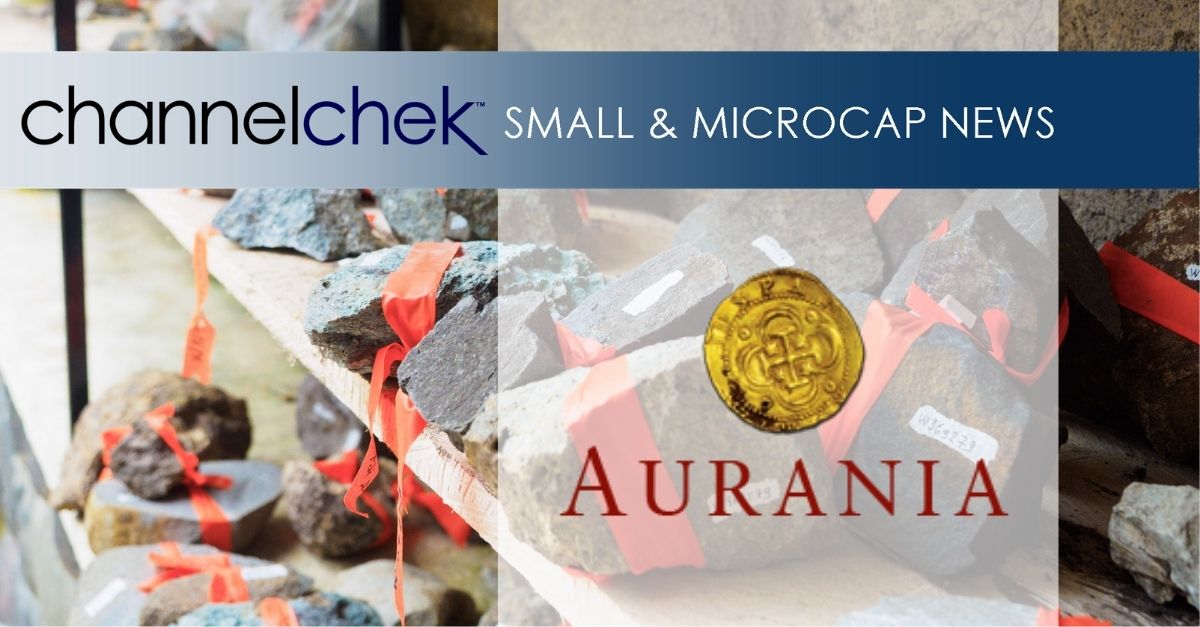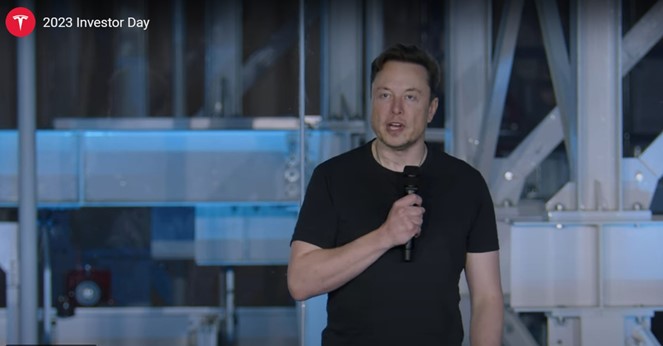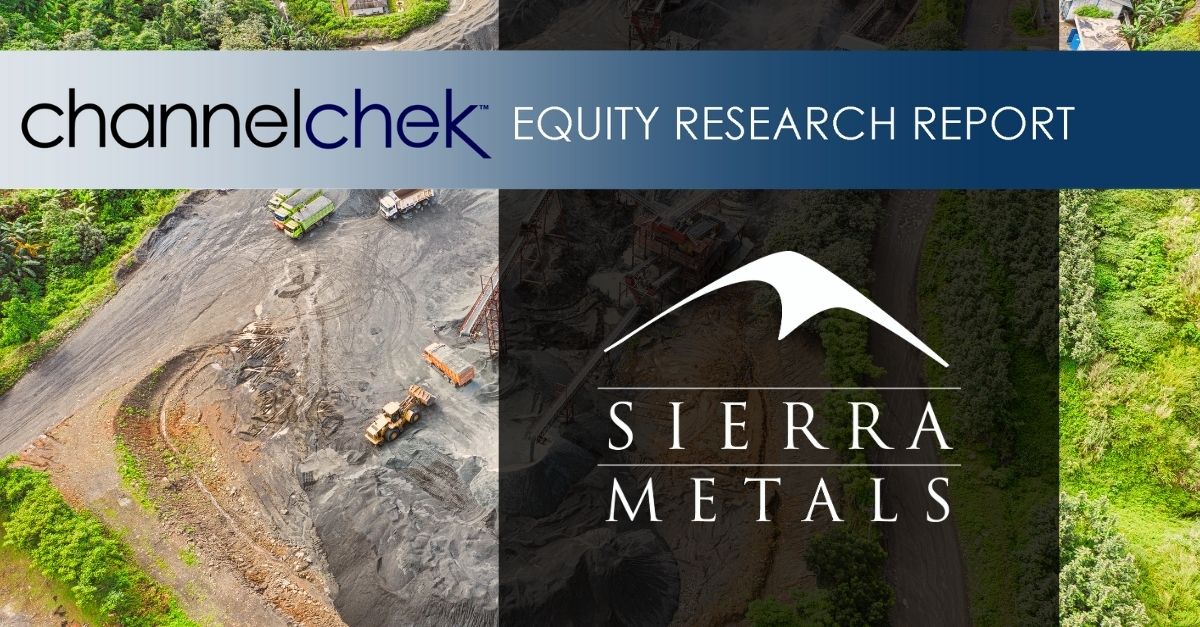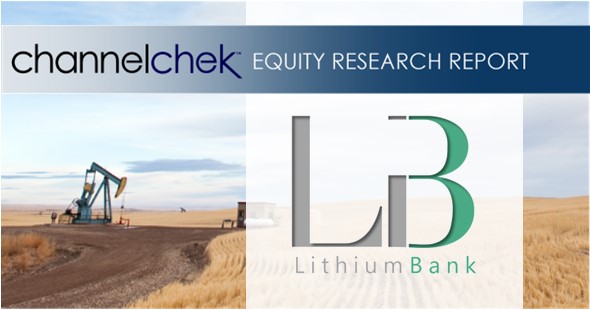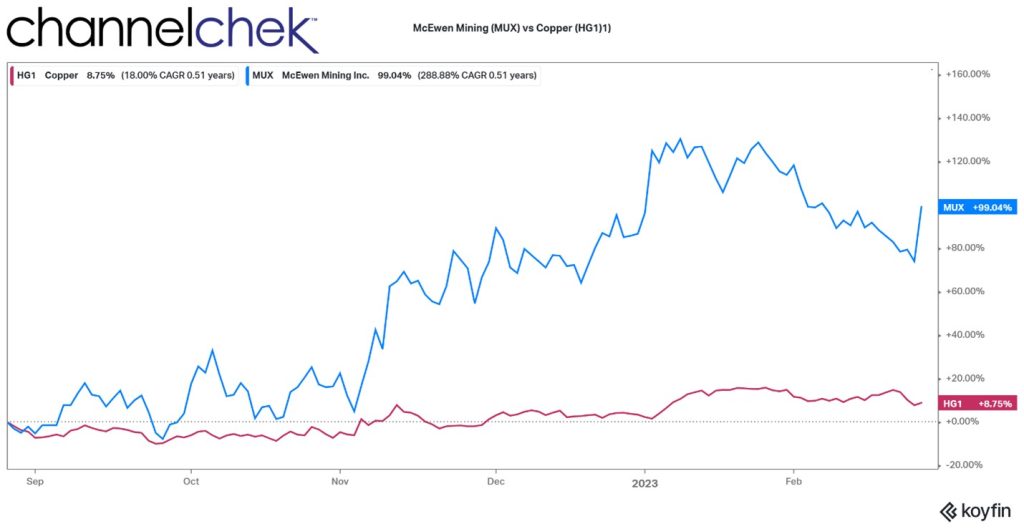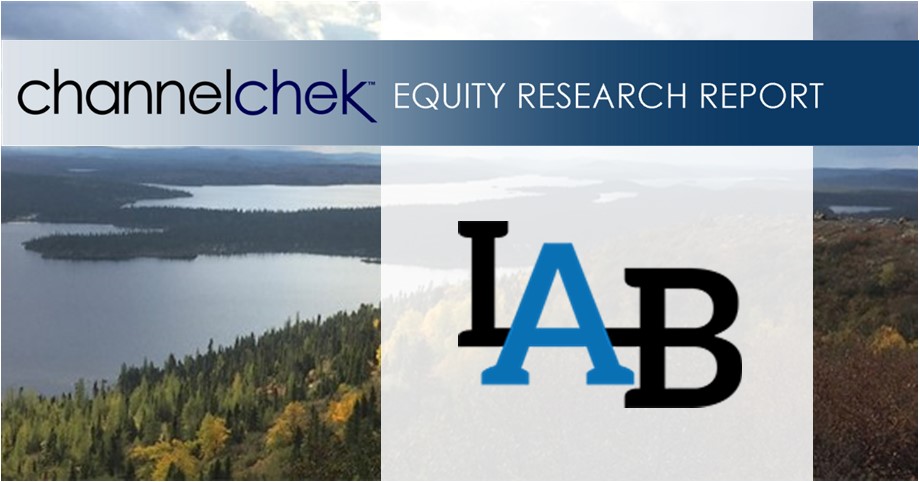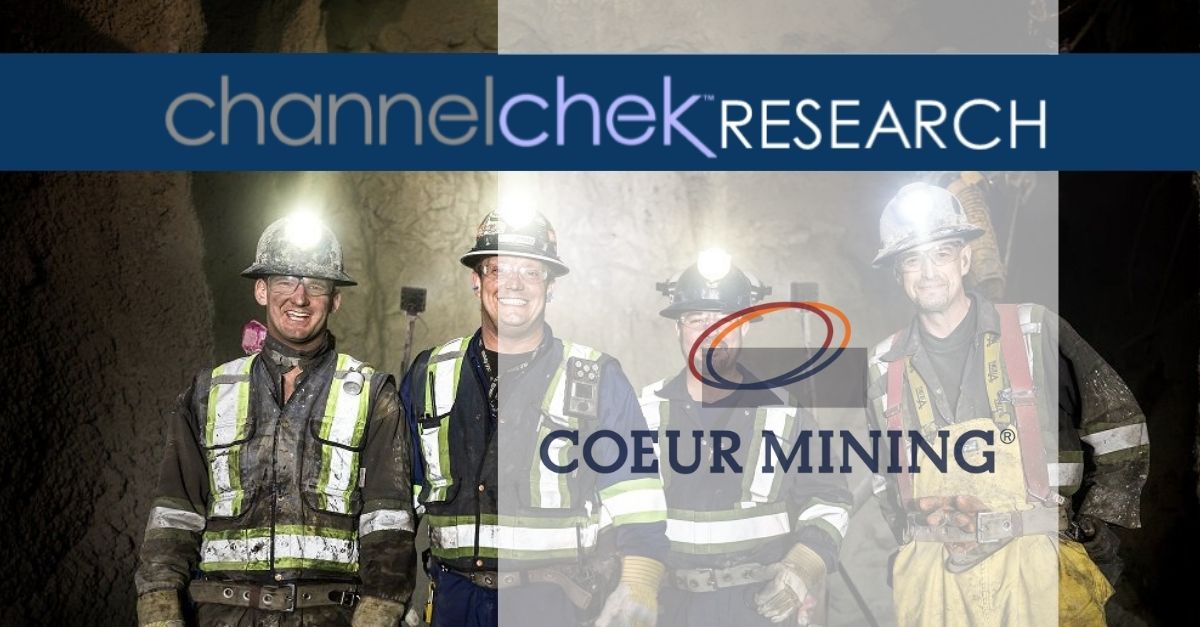
Research News and Market Data on AUIAF
Toronto, Ontario–(Newsfile Corp. – March 1, 2023) – Aurania Resources Ltd. (TSXV: ARU) (OTCQB: AUIAF) (FSE: 20Q) (“Aurania” or the “Company”) reports that preliminary results from the drill holes and surface prospecting at the Company’s Tatasham target in southeastern Ecuador indicate the discovery of a large, important epithermal system with similarities to the Fruta del Norte gold deposit located 100 kilometres to the south. All three holes drilled to date at Tatasham have intersected an important hydrothermal system with breccias, strong silicification, and high temperature illite-clay alteration, however no economic precious metal intersections have been encountered as yet. The upper part of the system is interpreted as a sinter paleosurface.
President and CEO, Dr. Keith Barron, commented, “It is very early in the story of Tatasham, but it is showing all the hallmarks of a large and vigorous hydrothermal system. We have discovered silica sinter over 2.7 km strike length, at the surface and in drill core. As well, zones of oxidized hydrothermal breccia were intersected below the sinter, similar in character to those found at Fruta del Norte. One thing that is apparent from the drilling is that the sinter horizon steepens downhole such that the bedding ends up aligned with the core axis. What this tells us is that the horizon is substantially tilted as you go to depth, as it would be in a pull-apart setting. You can think of it as a steep-sided valley opening up along a structure and the horizontally bedded rocks gradually tilting into the chasm as it widens. This is exactly the geological setting that revealed itself at Fruta del Norte. I consider the parallels between Tatasham and Fruta del Norte so far to be very compelling.”
Representative samples of drill core will be available for viewing at our booth in the Investors Exchange (booth #2948) at the Prospector’s and Developer’s Convention in Toronto, March 5th-8th.
The discovery of an epithermal system at Tatasham was unexpected, in our pursuit of a copper porphyry target indicated by geophysics. That porphyry target is still valid, but it may lie at considerable depth, or it may lie laterally. Our recent diamond drilling campaign was designed for a porphyry target and is too widely spaced for a typical epithermal target, but it very fortunately clipped the edges of what appears to be a very large system. Aurania has paused the drill program at Tatasham in order to conduct additional field work in the coming months including a ground based induced polarization (IP) survey to appropriately refine the epithermal target areas prior to additional drilling. This work is necessary to define the limit of the system, which remains open to the north, and to understand the geometry of the system.
The hydrothermal system at Tatasham is characterized by strong silicification surrounding hydrothermal breccias. The upper part preserves fine, irregular, layers of amorphous silica that has the characteristics of a sinter. Several textures typical of silica sinter have been identified, in particular, “network fabric” and geyserite lithofacies, the latter interpreted as proximal to the original vent (see fig.1). Two other sinters were found nearby, one of which is represented by a boulder located 2.7 km from the collar of TT-003 (see fig.2).
A sinter is the surface manifestation of geothermal activity; usually accompanied by geysers, hotsprings, boiling mud pools, and steaming ground. Gold and silver scaling deposits were discovered clogging the surface pipework of New Zealand geothermal fields in the routine maintenance of electrical generating installations (Brown, 1986) and this fundamentally established a genetic link between the formation of epithermal gold-silver deposits and ascending hot geothermal fluids. Extinct geothermal fields have long been recognized as favourable settings for gold-silver deposits. Simon Ridgway and Mar-West Resources discovered two gold mines in the 1990’s simply by staking active and extinct hotsprings off the topographic maps of Central America. Fruta del Norte contains a sinter of approximately 1.1 km areal extent, underneath which is the deposit. Not all of the many tens of thousands of the hotsprings around the world will be linked to formation of gold deposits at depth, but the proximity of Tatasham to Fruta del Norte, in the same belt of rocks, is considered highly favourable. Investigation has shown that the depth of formation of gold deposits below a sinter in the proper geological environment can be anywhere from nil to as much as 1,000 metres, though 200-300 metre might be considered typical.
Hole TT-003 (see fig.3) was collared in Cretaceous-aged Hollin sandstone which is considered to be post-mineral cover, as it is at Fruta del Norte. The hole continued in a series of continental sediments showing alternations of mudstone, siltstone, lithic sandstone, and polymictic conglomerates up to 18m thickness. The conglomerate contains rare clasts of vein chalcedony. This assembly of continental sediments is above a black limestone showing minor disseminated sphalerite mineralisation. The sediments overlie a tuffaceous volcano-sedimentary series. The clastic sediment-limestone-tuff sequence is interpreted as the filling of a pull-apart basin with an episode of marine incursion at the end of the volcanic activity. Immediately below the tuffaceous horizon lies a sinter displaying fine, irregular, layers of amorphous silica, locally overprinted by fault breccia. The Santiago Formation andesite below the sinter is propylitically altered (chlorite), with zones of silicification accompanied by barite, iron-oxides and high temperature illite-clay.
Three hydrothermal breccias cross the andesite below the sinter in hole TT-003. One of the breccias is cemented by barite, while the other two are rich in iron and manganese oxides in a silica matrix. It is significant that the drill core, even at a downhole depth of greater than 300 metres, is highly oxidized and it is believed that this could be a Jurassic-aged weathering horizon as also seen in the uppermost levels of Fruta del Norte.
Holes TT-001 and TT-002 crossed zones of silicification and potassic alteration representing the distal part of the epithermal system as reported in the press release dated January 9, 2023. The presence of the sinter in Hole TT-003, shows that this hole is closer to the centre of the system. To emphasize, mineralization in an epithermal system is typically found somewhere below the sinter; the sinter itself is barren as was the case with the sinter discovered at Fruta del Norte. Therefore, these first three holes should be regarded as discovery holes of the epithermal system, but there is considerable work and interpretation still to be done before economic drill results are expected.
For a very basic explanation of the vertical variability through an epithermal ore system watch Dr. Barron’s short lecture at:
Figure 1: a). Concentric, dense silica laminae in rounded spheres from hole TT-003 at 284.30m ; b). Geyserite in the McLaughlin Mine (San Quentin Sinter) California USA ; c). Network fabric identified in hole TT-003 at 268.50m; d). Network lithofacies resulting from bacterial activity on the margins of a pool; Whangapaoa Spring, Atiamuri, Taupo Volcanic Zone, New Zealand ; e). Jurassic network lithofacies consisting of silicified, irregular, webbed pattern; La Marciana, Deseado Massif, Argentina.
To view an enhanced version of this graphic, please visit:
https://images.newsfilecorp.com/files/2477/156667_4ac6eaaf345ae8b8_001full.jpg
Figure 2: Location of the sinter and boreholes at Aurania’s Tatasham target. Kutnahorite, a rare pink calcium manganese carbonate mineral, has been found on surface in several places at Tatasham. This is a common gangue mineral at the Fruta del Norte gold mine.
To view an enhanced version of this graphic, please visit:
https://images.newsfilecorp.com/files/2477/156667_4ac6eaaf345ae8b8_002full.jpg
Figure 3: Top graphic presents the interpretative section of hole TT-003 at Tatasham with the sinter location above the altered andesite lava of the Santiago Formation, compared in the bottom graphic with the sinter location at Fruta del Norte (from Aurelian’s PDAC presentation in 2008).
To view an enhanced version of this graphic, please visit:
https://images.newsfilecorp.com/files/2477/156667_auraniafigure3.jpg
Qualified Person
The geological information contained in this news release has been verified and approved by Aurania’s VP Exploration, Mr. Jean-Paul Pallier, MSc. Mr. Pallier is a designated EurGeol by the European Federation of Geologists and a Qualified Person as defined by National Instrument 43-101, Standards of Disclosure for Mineral Projects of the Canadian Securities Administrators.
About Aurania
Aurania is a mineral exploration company engaged in the identification, evaluation, acquisition and exploration of mineral property interests, with a focus on precious metals and copper in South America. Its flagship asset, The Lost Cities – Cutucu Project, is located in the Jurassic Metallogenic Belt in the eastern foothills of the Andes mountain range of southeastern Ecuador.
Information on Aurania and technical reports are available at www.aurania.com and www.sedar.com, as well as on Facebook at https://www.facebook.com/auranialtd/, Twitter at https://twitter.com/auranialtd, and LinkedIn at https://www.linkedin.com/company/aurania-resources-ltd-.
For further information, please contact:
Carolyn Muir
VP Corporate Development & Investor Relations
Aurania Resources Ltd.
(416) 367-3200
carolyn.muir@aurania.com
Neither the TSX-V nor its Regulation Services Provider (as that term is defined in the policies of the TSX-V) accepts responsibility for the adequacy or accuracy of this release.
Forward-Looking Statements
This news release contains forward-looking information as such term is defined in applicable securities laws, which relate to future events or future performance and reflect management’s current expectations and assumptions. The forward-looking information includes statements about: Aurania’s objectives, goals or future plans, statements, exploration and drilling results, potential mineralization, the corporation’s portfolio, treasury, management team and enhanced capital markets profile, the estimation of mineral resources, exploration, timing of the commencement of operations and estimates of market conditions. Such forward-looking statements reflect management’s current beliefs and are based on assumptions made by and information currently available to Aurania, including the assumption that, there will be no material adverse change in metal prices, all necessary consents, licenses, permits and approvals will be obtained, including various local government licenses and the market. Investors are cautioned that these forward-looking statements are neither promises nor guarantees and are subject to risks and uncertainties that may cause future results to differ materially from those expected. Risk factors that could cause actual results to differ materially from the results expressed or implied by the forward-looking information include, among other things, a failure to obtain or delays in obtaining the required regulatory licenses, permits, approvals and consents, an inability to access financing as needed, a general economic downturn, a volatile stock price, labour strikes, political unrest, changes in the mining regulatory regime governing Aurania, a failure to comply with environmental regulations and a weakening of market and industry reliance on precious metals and copper. Aurania cautions the reader that the above list of risk factors is not exhaustive.
